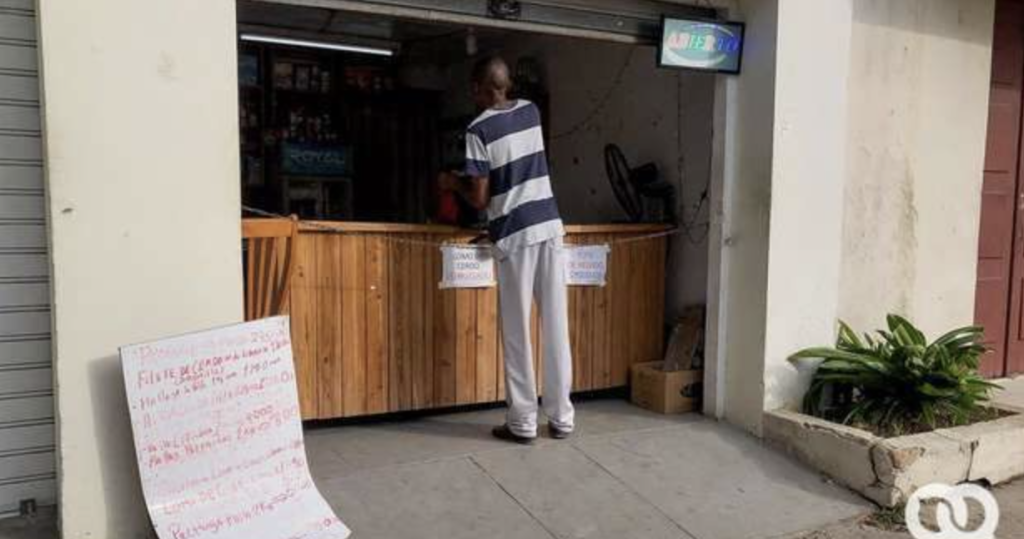’Cubadebate’ mentions without further details the “mistakes made” by Jaime Ernesto Chiang

![]() 14ymedio, Havana, October 19, 2024 — Jaime Ernesto Chiang Vega, the man who told Parliament in 2023 that Las Tunas – the province under his command – was “ungovernable,” was dismissed this Saturday by Cuban President Miguel Díaz-Canel, in the middle of the energy debacle. With him went his deputy governor, Ernesto Cruz, who sent the president a “resignation request” after “incurring violations in the exercise of his responsibilities.”
14ymedio, Havana, October 19, 2024 — Jaime Ernesto Chiang Vega, the man who told Parliament in 2023 that Las Tunas – the province under his command – was “ungovernable,” was dismissed this Saturday by Cuban President Miguel Díaz-Canel, in the middle of the energy debacle. With him went his deputy governor, Ernesto Cruz, who sent the president a “resignation request” after “incurring violations in the exercise of his responsibilities.”
While the whole country suffers a second day without electricity, Cubadebate reserved a place on its front page to report that Díaz-Canel, “making use of the powers conferred on him,” dismissed both politicians and informed the Provincial Council.
The statement alludes to the “mistakes made” by Chiang that caused his removal, but Cubadebate does not say a word about the failures attributed to him. In the case of his deputy governor, the “process of revocation of office” came “from above.” Chiang is replaced by Eduardo Walter Cuelí, current coordinator of Programs and Objectives of the provincial government, the next on the promotion ladder in Las Tunas.
The lack of transparency and the strange circumstances in which both dismissals occurred have been noticed by users on Cubadebate’s Facebook page – not just on its website. “Why did they replace him? Where’s the Communication Law that says you have to tell the truth about everything and not censor?” complained user Rogelio Loyola. continue reading
“We are still waiting to hear about the mistakes of the Minister of Economy”
Another, knowing that the Government rarely gives information about the “mistakes” of its officials, said: “We are still waiting to hear about the mistakes of the Minister of Economy,” referring to Alejandro Gil, whose whereabouts are still unknown.
Last April, the governor of Cienfuegos, Alexandre Corona, also “resigned” from his position after “recognizing mistakes” committed during his four years of administration. These exits are added to the unusual number of changes of political figures in Cuba, both at the regional level within the Communist Party and in several ministries of the country.
A year ago, all the governors were voted in for five-year terms, but for various reasons these provinces have had to seek replacements in advance. In these cases, the delegates vote on the governors proposed made by the country’s president, and so far there have only been majority ratifications. Thus, the so-called “movements of the cadres” accumulate on the Island, ranging from the dismissal of the first provincial secretaries of the Party to ministers.
In December 2023, Chiang appeared before the National Assembly to account for the situation in Las Tunas, one of the provinces that had done the worst that year. His speech, which he delivered with a serious face and a thick report in his hand, ended up summarizing the “situation of ungovernability and disobedience in the population,” which he attributed to the “enemies of the Revolution.”
Chiang intended to exonerate his administration from the alarming figures that he himself provided: 34 entities that did not comply with their plans due to “lack of demand, rigor and responsibility on the part of some cadres”; 1,481 million pesos missing from his total net sales plan; “deficient collection management”; “chains of nonpayments”; “insufficient economic and financial administration”; and, in short, an expenditure of 185 million pesos more than the state budget allowed, 3.511 billion.
“Between El Chino and El Gallego they went from bad to worse for the working people”
Their solution to obtain money was to use force. Their “confronting crime” campaign, which resulted in some 8,488 “control actions” to collect overdue fines and detect irregularities, gave the State 15,531 million pesos. Judging by this Saturday’s announcement, it was not enough.
Among the people of Las Tunas, neither Chiang nor his deputy governor – nicknamed El Gallego (the Spaniard) and El Millonario (the Millionaire) – had a good reputation. A resident of the provincial capital tells this newspaper that both politicians ignored government management and concentrated on protecting several owners of private businesses that had “monopolized the sale of food.” “Chiang is just a scapegoat,” he adds, “but it’s true that between El Chino and El Gallego they went from bad to worse for the working people.”
Translated by Regina Anavy
____________
COLLABORATE WITH OUR WORK: The 14ymedio team is committed to practicing serious journalism that reflects Cuba’s reality in all its depth. Thank you for joining us on this long journey. We invite you to continue supporting us by becoming a member of 14ymedio now. Together we can continue transforming journalism in Cuba.























